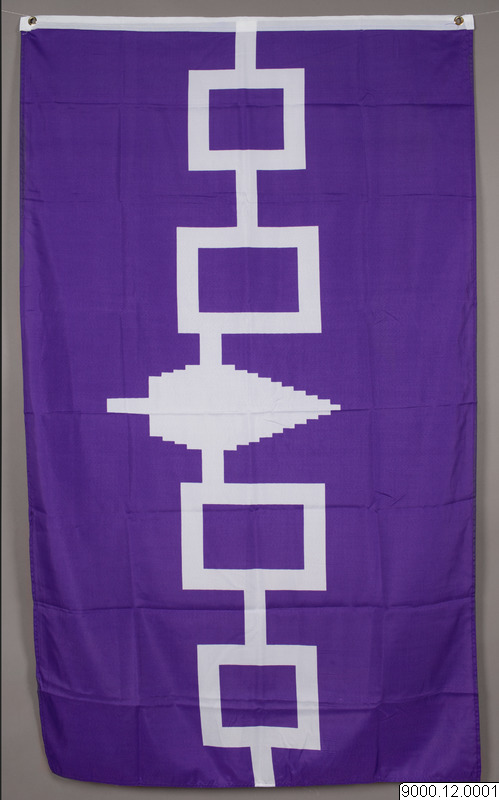The Haudenosaunee Confederacy consists of six nations: Mohawk, Oneida, Onondaga, Cayuga, Seneca and Tuscarora.
All originated in the northeastern forests on either side of the US–Canada border.
The flag of the Confederacy was designed in the 1980s, based on a belt of purple and white shells, or wampum, which sealed and described the Great Law of Peace. The Hiawatha Wampum Belt was named after Hiawatha, the man who, according to legend, broke a long cycle of violence and vengeance between the nations, instead uniting them. The white line in the Confederacy flag symbolises peace and unity. It links together the five original nations and invites others to join. The flag is meant to be read from east to west, in the order the nations joined. The Onondaga, in the middle, are represented by a Weymouth pine, whose needles grow in clusters of five, in the middle of the flag. According to legend, the five original nations buried their weapons under such a pine when they made their peace. In 1722, the Tuscarora joined the Confederacy, which has consisted of these six nations ever since.
This flag was purchased in 2016 from the cultural centre in the Mohawk Kanawak:he Reservation. The Mohawks call themselves Haudenosaunee, which means “people of the longhouses”. Longhouses remain important meeting places, and in Kanawak:he, population 8,000, there are two, one a political centre and one that is more spiritual. The annual powwow attracts 100,000 visitors, and a Canadian television series, Mohawk Girls, is filmed on the reservation.


 ARTIKLAR I WIKIPEDIA
ARTIKLAR I WIKIPEDIA ARTIKLAR I WIKIDATA
ARTIKLAR I WIKIDATA BILDER I WIKIMEDIA COMMONS
BILDER I WIKIMEDIA COMMONS





